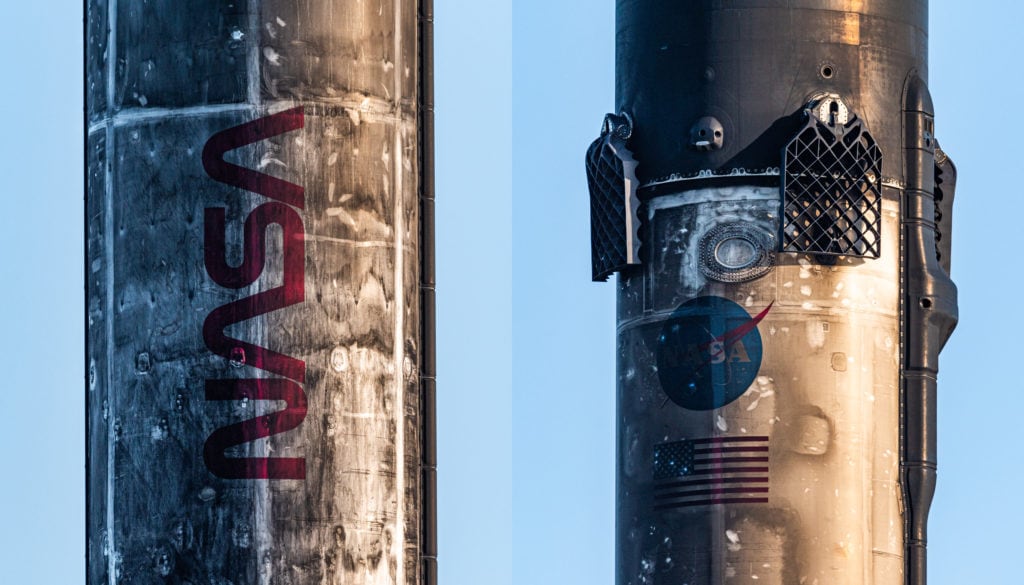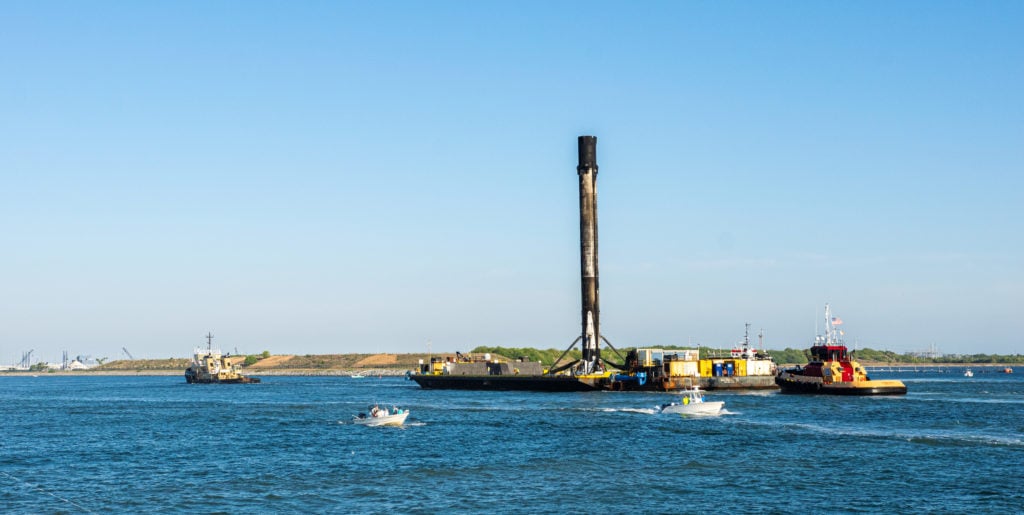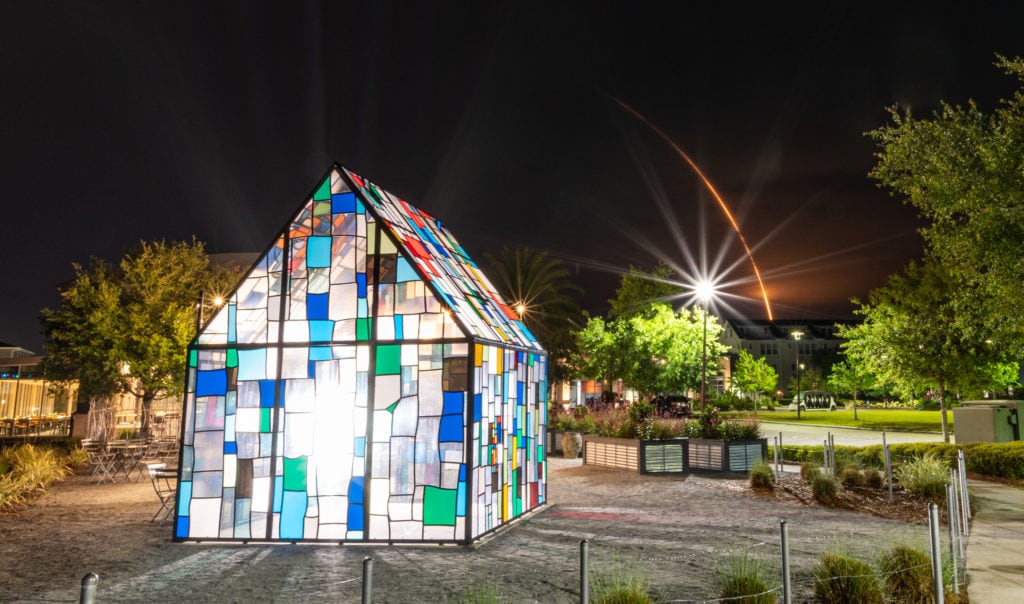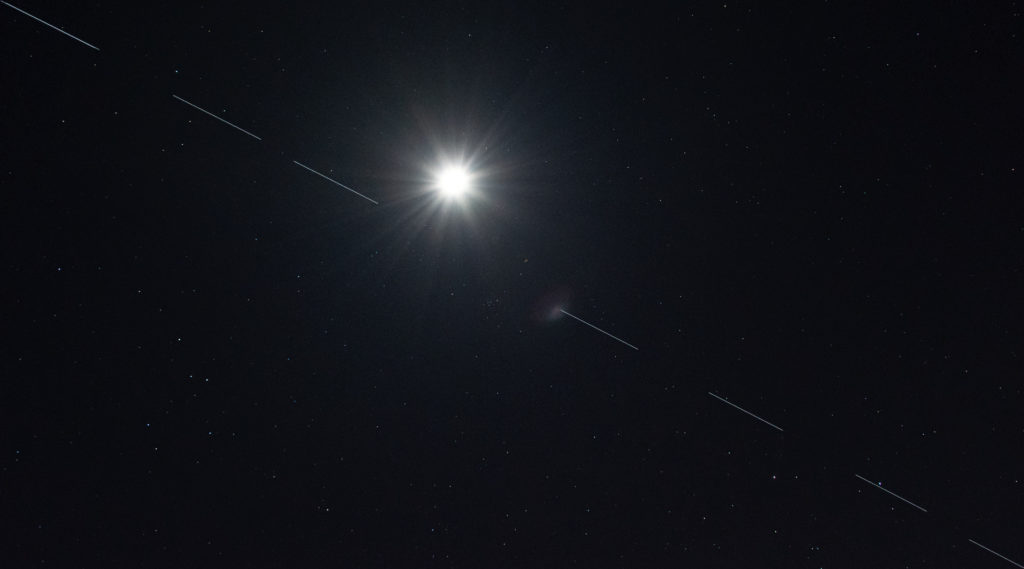The SpaceX Starlink missions follow what could be described as a life cycle: launch, deploy, land, and repeat. This remarkable process involves many finer details, and it is what we will be covering in this article. Starlink launches have become ever more prevalent this year. Over the past month, we have seen two of these missions. Starlink is a space internet constellation that, as of now, provides near-global coverage. The current constellation consists of over 1,300 satellites in low Earth orbit – 550 kilometers (approximately 340 miles) in altitude. That is already an impressive number of satellites, yet SpaceX plans to launch thousands more over the next few years. Falcon 9 is the workhorse rocket that has been and will continue to build this space-based network.

The first part of the Starlink mission life cycle takes place at Cape Canaveral. The Falcon 9 rocket will launch from one of two pads: LC-39A or SLC-40. In either case, the rocket starts in a horizontal integration facility (HIF). This is where the Starlink payload is mated to the rocket. The usually 60 satellites, flat in shape, are stacked vertically in the rocket’s massive fairing. Once everything has passed inspection, the Falcon 9 rocket will be rolled out of the hanger and raised vertically at the pad. On launch day, Falcon 9 is fueled with hundreds of thousands of pounds of fuel – liquid oxygen (LOX) and rocket-grade kerosene (RP-1). When these two fluids meet in the combustion chamber of the nine Merlin engines, an inferno of hot gas is expelled and approximately 1.7 million pounds of thrust is generated. Falcon 9 will then take off with a thunderous roar – reaching space in a mere three minutes. At around T+00:08:40, the first stage will land out in the Atlantic Ocean on an autonomous spaceport drone ship (ASDS). It can be fun to view these launches up close at the Cape; however, one can still have an amazing view from Lake Nona on a clear night or day.

Once the second stage of Falcon 9 has achieved a stable parking orbit, the deployment phase will commence. To deploy the Starlink satellites, the second stage must begin rotating along its pitch axis. With everything now spinning, retention pins holding the payload in place are released, and the satellites are flung from the second stage – splaying out like a deck of cards. Over the next few days, the satellites will slowly spread out in their orbit to create a more even distribution. During this time, an observer on the ground may be able to witness a chain of lights quickly moving across the sky at dawn or dusk. This phenomenon is called a Starlink train, and it can be an incredibly beautiful site. A few months ago, we were fortunate to witness a Starlink train passing right by the moon – visible from Lake Nona! For multiple minutes, the spectacularly bright satellites zoomed by overhead. It was quite possibly one of the most surreal night sky events we have ever witnessed.

With the Falcon 9 first stage landed on a drone ship, either OCISLY (Of Course I Still Love You) or JRTI (Just Read the Instructions), it must now make the long voyage back to Port Canaveral – some 600 kilometers (approximately 370 miles) in length. This journey typically takes three to four days to complete. Upon arrival at the port, multiple tug boats help to guide the drone ship toward the docks. After being docked, the SpaceX recovery crew folds up the landing legs and rotates the booster horizontal onto a truck. It is then driven back to the launch site and processed for yet another flight. Many people travel to the port to watch these magnificent rockets float by. It is as close as the general public can get to the multi-million-dollar space hardware. Port Canaveral is about 45 minutes away from Lake Nona and thus makes for a nice day trip. During your visit to the port, you can also stop by Cocoa Beach, which is something we do quite often. There are also many excellent restaurants in the area.

As it can be seen, the life cycle of Falcon 9 and Starlink is truly something to be marveled at. Being able to witness many parts of the process in-person makes it all the more special. We hope that you will also have the chance to experience some of the out-of-this-world events happening right near Lake Nona.


